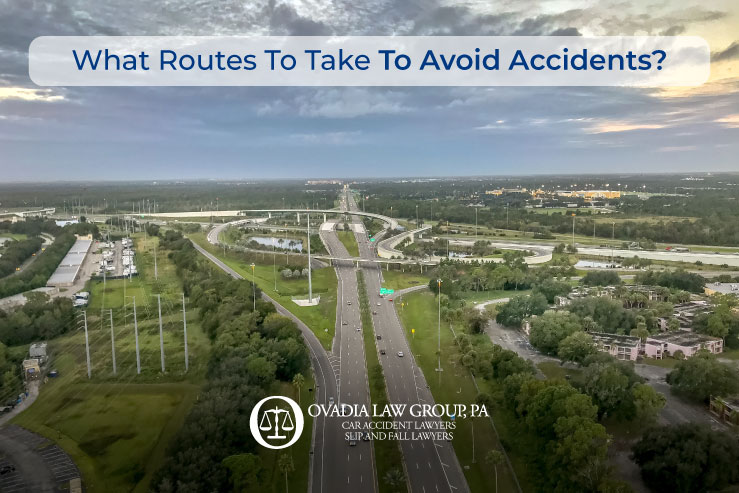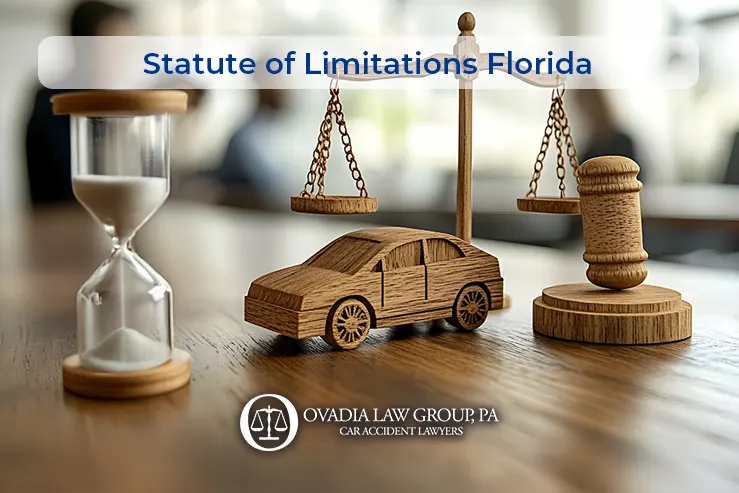If you are traveling in Florida and want to avoid accidents, you must know the best routes. Read on to learn more.
Drivers in Florida must know which routes are most hazardous and which ones should be avoided to prevent automobile accidents. National Transportation Safety Board and the Florida Department of Transportation include data on road conditions you may check for yourself.
While you may think that it is not possible to avoid accidents entirely, there are many ways to travel safely and avoid accidents. Here are some of them.
To assist you with your Florida car accident lawsuit, the following suggestions are provided:
The Safest Roads To Drive In Florida
Orlando and Miami are connected via the Florida Turnpike, historically known as the Ronal Reagon Turnpike. So the traffic isn’t as heavy as it would be if it were on a regular road. However, it is a frequent mode of transportation for vacationers.
Particularly during the holidays, traffic may get backed up. As a result, it is critical to be aware of the most excellent vantage points to enjoy Florida’s picturesque highways.
According to the most current standings, the following are the safest roads to use while driving in Florida.
- Toll Roads
According to statistics, toll roads in Florida are safer than non-toll roads. Several factors, including inexperienced drivers, may play a role in this. New drivers may experience more anxiety behind the wheel and make hasty decisions. Toll roads are safer than non-toll roads. New toll roads can be intimidating for inexperienced drivers. Always obey traffic laws and drive cautiously. Inexperienced drivers may be more prone to collisions.
- Charlotte County
If you’re looking for the safest roads to drive on in Florida, look no further than Charlotte County. Its state-of-the-art streets are regarded as among the best in the state. In addition to securing your driving privileges, Charlotte County’s roads are also immaculate, well-maintained, and maintained. Drivers will be relieved to know that they won’t have to worry about hitting potholes or getting scrapes on their vehicles.
- East Colonial Drive
East Colonial Drive is a major east-west arterial road in Central Florida. East Colonial Drive, Central Florida’s most dangerous east-west highway, is an unwelcome sight for drivers.
According to the Florida Highway Patrol, the road has been the site of at least 48 fatal crashes since 2001.
The speed limit between Semoran Boulevard and East Colonial is 45 mph, and traffic signals are usually half a mile or more apart. Businesses are set back dozens of yards from the road, requiring drivers to be cautious when passing.
- St. Petersburg
By avoiding congested areas, drivers in St. Petersburg can save time and money. Gandy Boulevard, State Road S80, and State Road 582 are excellent alternatives for avoiding Tampa traffic. The area’s transportation options are also quite good, with residents commuting to work for about a half-hour. You can also take the new SunRunner bus route to get downtown quickly.
While 80 percent of St. Petersburg residents own cars, the city also provides several public transportation options, such as bike shares. PSTA buses serve several routes in Downtown St. Petersburg, and the Downtown Looper offers free transportation to major attractions. The Suncoast Beach Trolley and the Central Avenue Trolley also provide service to various locations throughout the city. Those concerned about safety and who want to help St. Petersburg become a more bicycle-friendly city should consider using one of the alternative modes of transportation.
Routes To Avoid Driving In Florida
Driving in Florida is difficult regardless of where you are in the state, from Orlando to Jacksonville. According to the most recent rankings, the following are the best routes to avoid when driving in Florida to prevent accidents.
- Pensacola
Pensacola, Florida, is one of the most dangerous places to drive in Florida. Pensacola, Florida, has the state’s highest traffic fatality rate, 2.5 times higher than the national average. While downtown Pensacola is generally safe, you should be aware of some of the pitfalls of driving here.
The crime map for Pensacola depicts the number of crimes committed per 1,000 residents and day visitors. You can also see how many crimes were committed in various areas. The area around the airport is high-crime, but the neighborhoods surrounding it are relatively safe. It is not always safe to drive alone if you are a woman. Hurricanes are also a significant issue in Pensacola.
- Jacksonville
It is a common misconception that Florida drivers are not as bad as those in other states. However, Jacksonville is not as bad as its reputation suggests. In a recent study, Waze, a popular navigation app, ranked cities based on the quality of their driving. The study used millions of active Waze users to rate traffic, road quality, and safety in cities. Jacksonville finished fifth overall, outscoring Honolulu, Los Angeles, and Portland.
Driving in Jacksonville necessitates some forethought and the use of a map. The St. Johns River runs through the city and carves a large path. The number of bridges is more important than the distance between two points. When visiting Jacksonville, keep an eye out for road construction notices and road closures. Drive to nearby cities as soon as possible. Similarly, new residents should memorize the bridges and bridge signs to facilitate navigation.
- Indian River County
Local law enforcement prioritizes traffic safety, and the high rate of citations per hundred crashes in Indian River County has increased distracted driving citations. The high citation rate per 100 crashes in Indian River County. According to recent data, drivers cited for distracted driving are more likely to receive another citation if they fail to obey traffic laws. Despite the increased risk of distracted driving, many people disregard the law and drive distracted, putting themselves at risk of an accident.
- Sheridan Street, Broward County
Although the state has the lowest number of traffic fatalities, Broward County, located north of Miami-Dade, is still the second-worst place to drive in Florida. In 2015, there were 38,409 crashes in Broward County, with 221 people killed in traffic. US-440, which runs from Dania Beach to Hollywood, is one of the worst sections.
On Sheridan Street, several accidents occurred, including one involving a car that crossed the express lane and collided with a bicyclist near Douglas Road. A car slammed into a pole at another Broward County intersection, killing the driver. A third Broward County intersection was a dangerous place on the road.
- I-75 (Interstate 75)
Interstate 75, which runs through South Florida, is ranked as the country’s second most dangerous road. According to the National Highway Traffic Safety Administration, there were 38,409 crashes on this road in 2015, with a death rate of 106.7 per mile. This road was involved in 58% of the accidents.
Furthermore, Interstate 75 has a high fatality rate: between 2010 and 2015, it was responsible for nearly 200 deaths and injured about 7,000 people.
Some Florida Driving Regulations
- Turning Right On A Red Light
You’ve come to the right place if you’ve ever wondered if it’s legal in Florida to turn right at a red light. This law is interpreted differently in different counties and intersections. For example, it is permitted to make a right turn in Manatee County, but state law does not specify that you can. However, in Bradenton, a rolling right on a red is permitted.
- Driving While Intoxicated
The Florida Highway Patrol reported nearly 4,000 accidents on Florida’s roads involving impaired drivers last year. More than 500 people will die as a result of this. The figure is expected to rise even further during the holiday season when Florida sees an increase in tourism.
The Florida Department of Highway Safety and Motor Vehicles predicts that impaired driving-related crashes will rise even further.
- Distracted Driving
While there is no specific law prohibiting cell phone use while driving, Florida has some regulations. While drivers must refrain from using their phones while driving in school zones, work zones, or school crossings, they may still be pulled over for violating the law.
Drivers caught using their cell phones while driving face a $60 base fine and three points on their license. The law does not apply to stationary vehicles and is ineffective for emergency vehicle violations. Drivers will still receive a warning if an emergency vehicle needs to contact them for assistance.
Bottom-line
If you are involved in an accident, you can seek the assistance of an experienced Auto Accident Attorney from Ovadia Law Group in Florida. This law firm has over a decade of experience and has successfully represented thousands of clients in insurance company lawsuits.
The lawyers at Ovadia Law Group are committed to ensuring that their clients get proper compensation, and they will do all in their power to uphold your rights. Call 1-800-674-9396 now if you’ve been involved in any car accident today. Located in Miami, Fort Myers, and Orlando, Ovadia Law Group is a full-service law firm that provides customized assistance and legal solutions.




